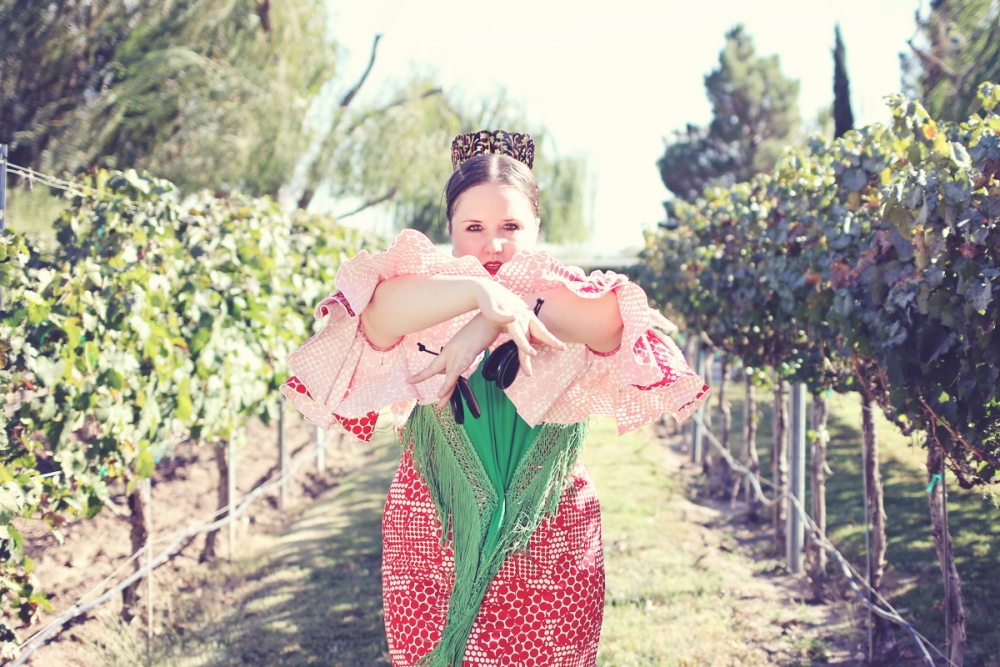
Recording Latinx Dance Histories
She was making waves in New York’s dance world when California came calling.
After serving as deputy school director at Ballet Hispánico in New York City, where she co-led programs for roughly 700 dancers, Kiri Avelar joined UC Santa Barbara’s doctoral program in dance this fall as a Chancellor’s Fellow, researching dance histories.
In the spring, her worlds will collide when Ballet Hispánico is in residence at UC Santa Barbara in partnership with UCSB Arts & Lectures and sponsored by donors Jody and John Arnhold ’75, a trustee of the UC Santa Barbara Foundation. She’ll be working with the company while they are on campus.
Just before leaving the East Coast — to which she continues to return regularly for artistic projects — Avelar co-curated an exhibition on the legendary Mexican American choreographer José Limón at the New York Public Library for the Performing Arts. The show heads to Mexico City this summer.
Originally from the El Paso/Juárez border between Texas and the Mexican state of Chihuahua, it was Avelar’s time and work in New York City that crystalized her identity as a fronteriza (borderlands) artist. Early on, she knew her goal was to research and create accessible, inclusive dance practices anchored in Chicanx and Latinx feminism and border theory.
“It’s important to identify as a borderlands person,” Avelar said. “Coming of age in El Paso and Juarez with that physical border between the U.S. and Mexico shaped me as a person, my identity, my art practice, my research in border theory and notions of transnational dance companies.”
Living in New York as a young adult, she was able to step back and see how much her provenance had informed her work. “The in-between space is blurred,” she said, “sometimes it’s messy, sometimes it feels really good and sometimes I’m like, where is the space for both worlds together?”
Focused on how dance histories are shared, written about and taught, Avelar’s research delves into questions of historical omissions — what’s told and what’s not told in dance history and scholarship? — while unpacking the systems in place that erase and white-wash Latinx diaspora art and contributions.
“I work on understanding the archive through creative practice so it’s not solely the writing and the viewing of creative processes but how can we create and understand the archive differently,” she said.
In her own dance training, Avelar learned classical dance and history. But she was concerned by how the presentation and framing of dance history had been shaped by an Anglo-European lens. Through researching border cultures, the Latinx diaspora and Indigenous groups, Avelar uncovers documentation, oral histories and visual documentation to help shape new dance histories. Understanding Latinx dance history will also further illuminate the American dance tradition — which it has deeply influenced.
“What is taught doesn’t get at the fullness of dance forms that we have in the U.S. or what we have been shaped by,” she said. “What is American? Anything Latin or Hispanic is seen as ‘foreign’ and might not be considered part of ‘dance’ in the U.S. How can we keep challenging this language and who is included in these dance histories?”
In addition to Avelar’s 11 year tenure at Ballet Hispánico, she also co-developed the Latinx Dance Educators Alliance and, with her family, co-founded La Academia de Ballet Emmanuel — a dance program established at an orphanage in Juárez — where she has served as the founding director since 1999. Avelar is also serving as dramaturg for Ballet Hispánico’s Michelle Manzanales, who is choreographing new work on Mexican Baroque poet Sor Juana Inés de la Cruz. The production premiers in June 2023 at the New York City Center.



